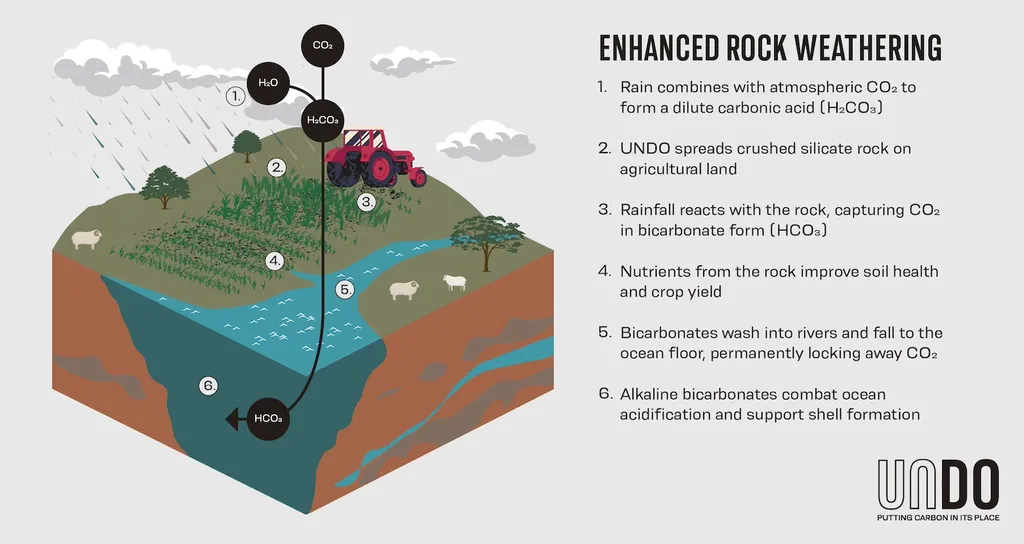In the quest for innovative climate mitigation strategies, scientists are turning to the Earth’s natural processes for inspiration. A recent study published in the journal *Green Energy and Sustainability* (which translates to *Zeleena Energya un Ilgtspējiga Attīstība* in Latvian), led by David A. C. Manning from the School of Natural and Environmental Sciences at Newcastle University, explores the potential of Enhanced Rock Weathering (ERW) as a nature-based solution for carbon dioxide removal. This approach, which leverages the natural weathering of silicate minerals to capture CO2, could have significant implications for the energy sector and beyond.
ERW is a process that accelerates the natural weathering of silicate rocks, such as dolerite and basalt, to remove CO2 from the atmosphere. By crushing these rocks to increase their surface area and applying them to soils, the process enhances the natural ability of silicate minerals to react with CO2 and form stable carbonates. This method not only helps to mitigate climate change but also utilizes existing infrastructure in mining and processing, making it a potentially scalable and cost-effective solution.
“The beauty of ERW is that it builds on natural processes that have been regulating the Earth’s climate for millions of years,” says Manning. “By enhancing these processes, we can actively remove CO2 from the atmosphere and store it in a stable form, all while utilizing materials that are already being extracted and processed for other uses.”
The study highlights the potential of ERW to contribute to negative emissions technologies, which are crucial for meeting global climate targets. The energy sector, in particular, could benefit from this approach, as it provides a means to offset emissions from power generation and industrial processes. Additionally, the use of quarrying byproducts in ERW could create new revenue streams for the construction industry, further enhancing its commercial viability.
However, the researchers acknowledge that there are challenges to be addressed before ERW can be widely deployed. These include verifying the CO2 removal claims and scaling up production to meet the global need for billions of tonnes of CO2 removal. “We need to ensure that the CO2 removal claims are robust and that the process is scalable,” says Manning. “This will require a multidisciplinary approach, drawing on expertise in mineralogy, geochemistry, and engineering.”
The study also emphasizes the importance of sound knowledge of mineralogy and geochemistry in addressing these challenges. By understanding the chemical reactions involved in ERW and the properties of the silicate minerals used, researchers can optimize the process and maximize its effectiveness.
As the world seeks innovative solutions to combat climate change, ERW offers a promising avenue for carbon dioxide removal. With further research and development, this nature-based approach could play a significant role in mitigating the impacts of climate change and shaping the future of the energy sector. “ERW is a testament to the power of nature-based solutions,” says Manning. “By working with nature, rather than against it, we can develop effective and sustainable strategies for climate mitigation.”
The research published in *Green Energy and Sustainability* provides a compelling case for the potential of ERW in the fight against climate change. As the energy sector continues to evolve, this innovative approach could offer a valuable tool for achieving negative emissions and securing a sustainable future.

